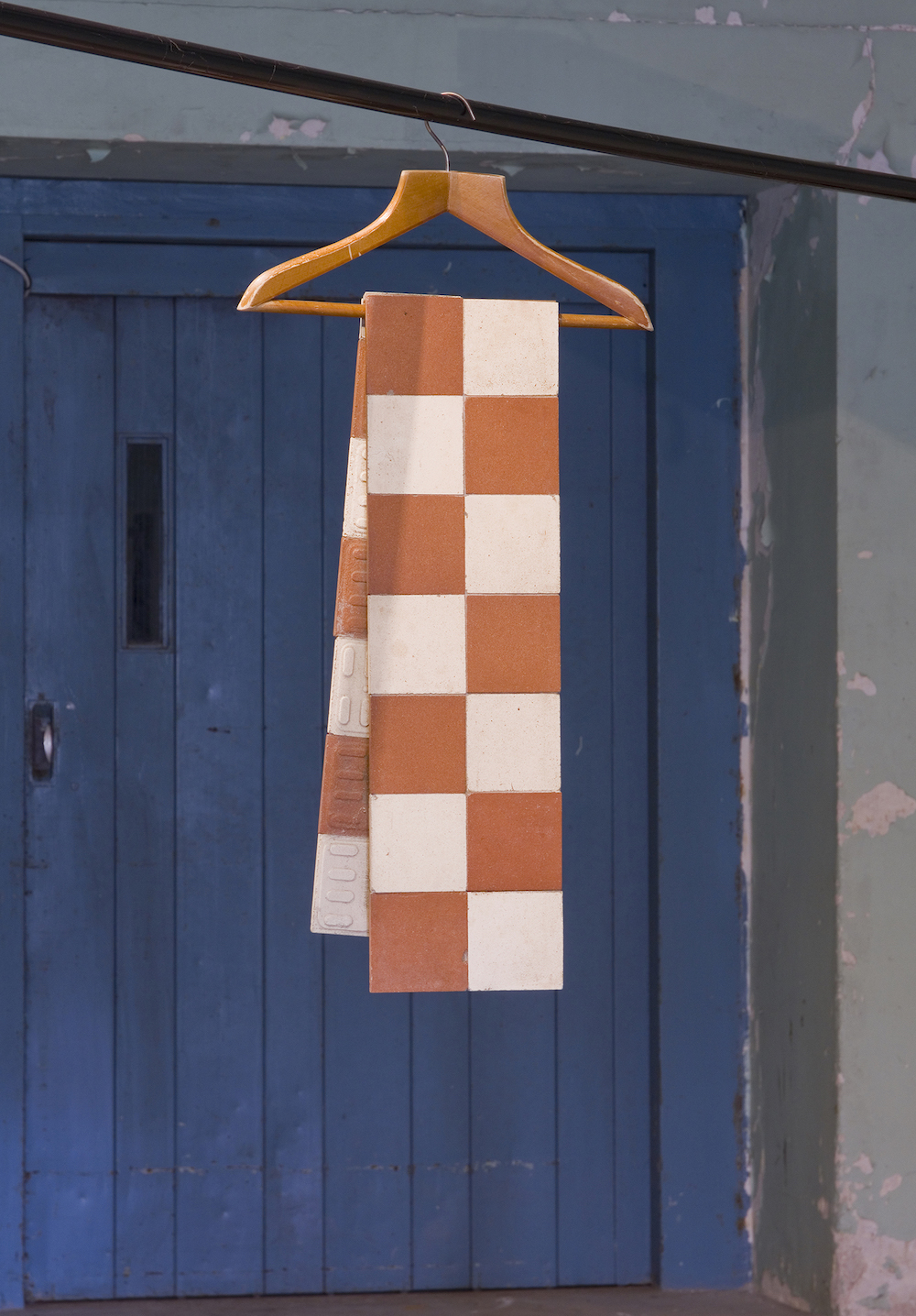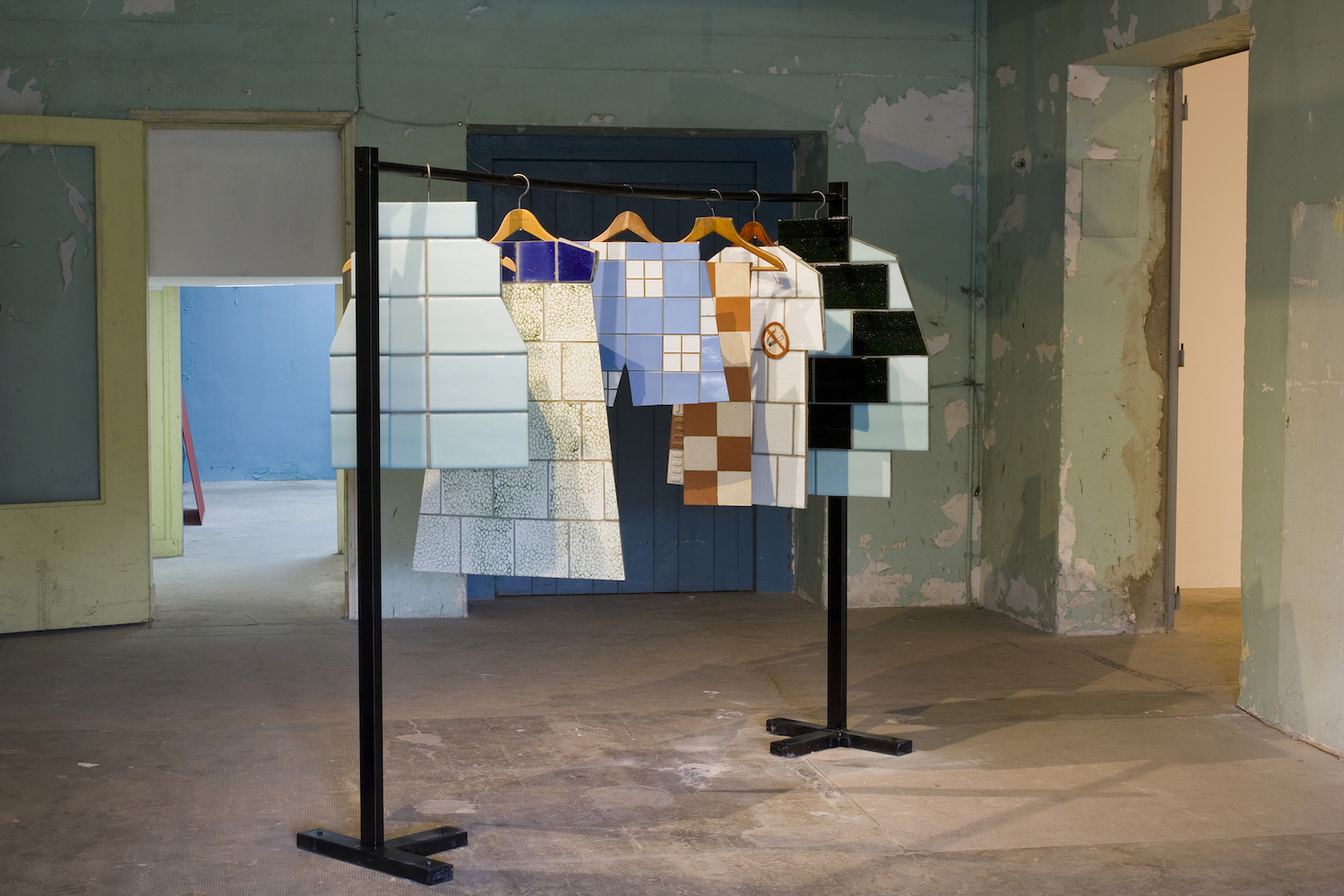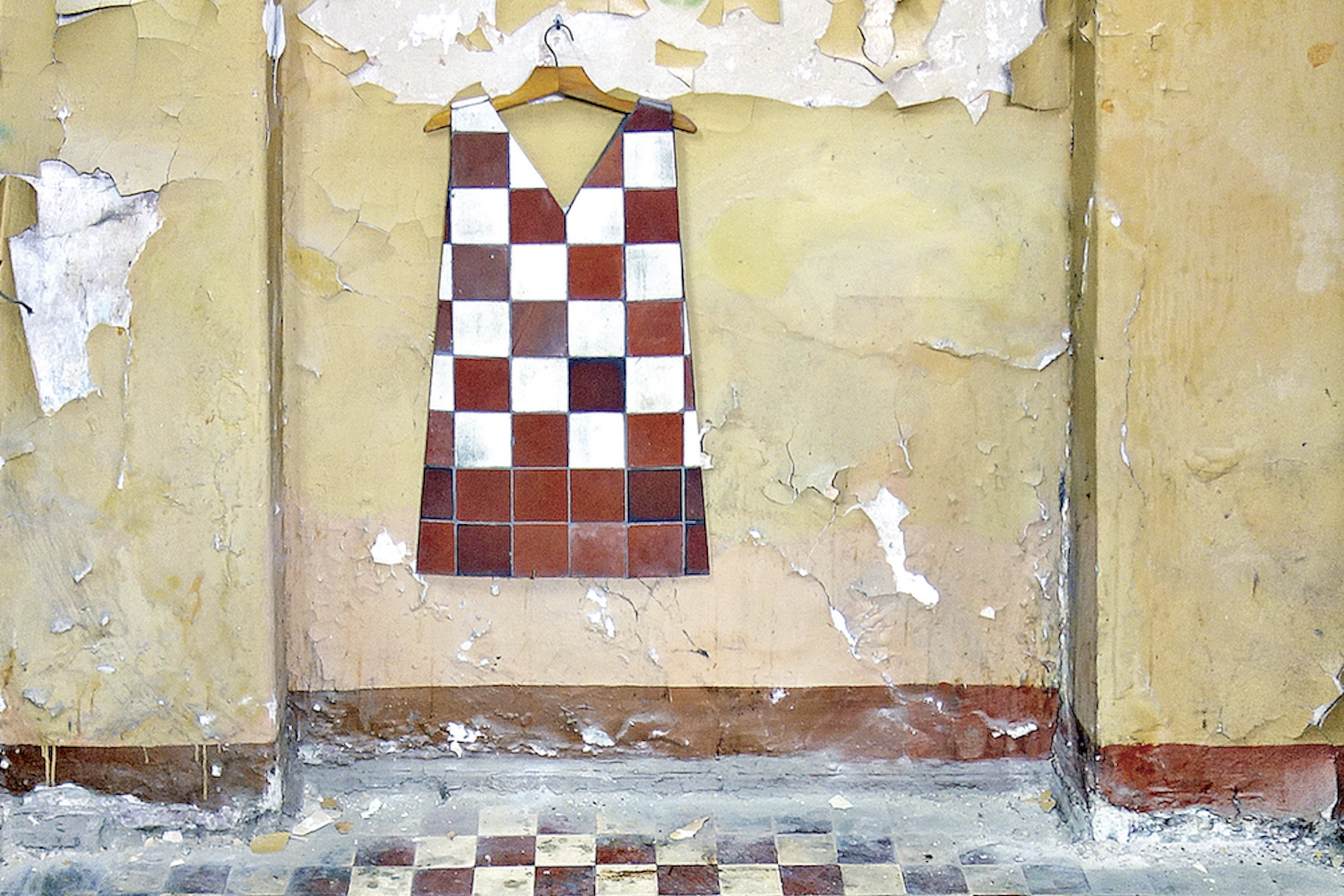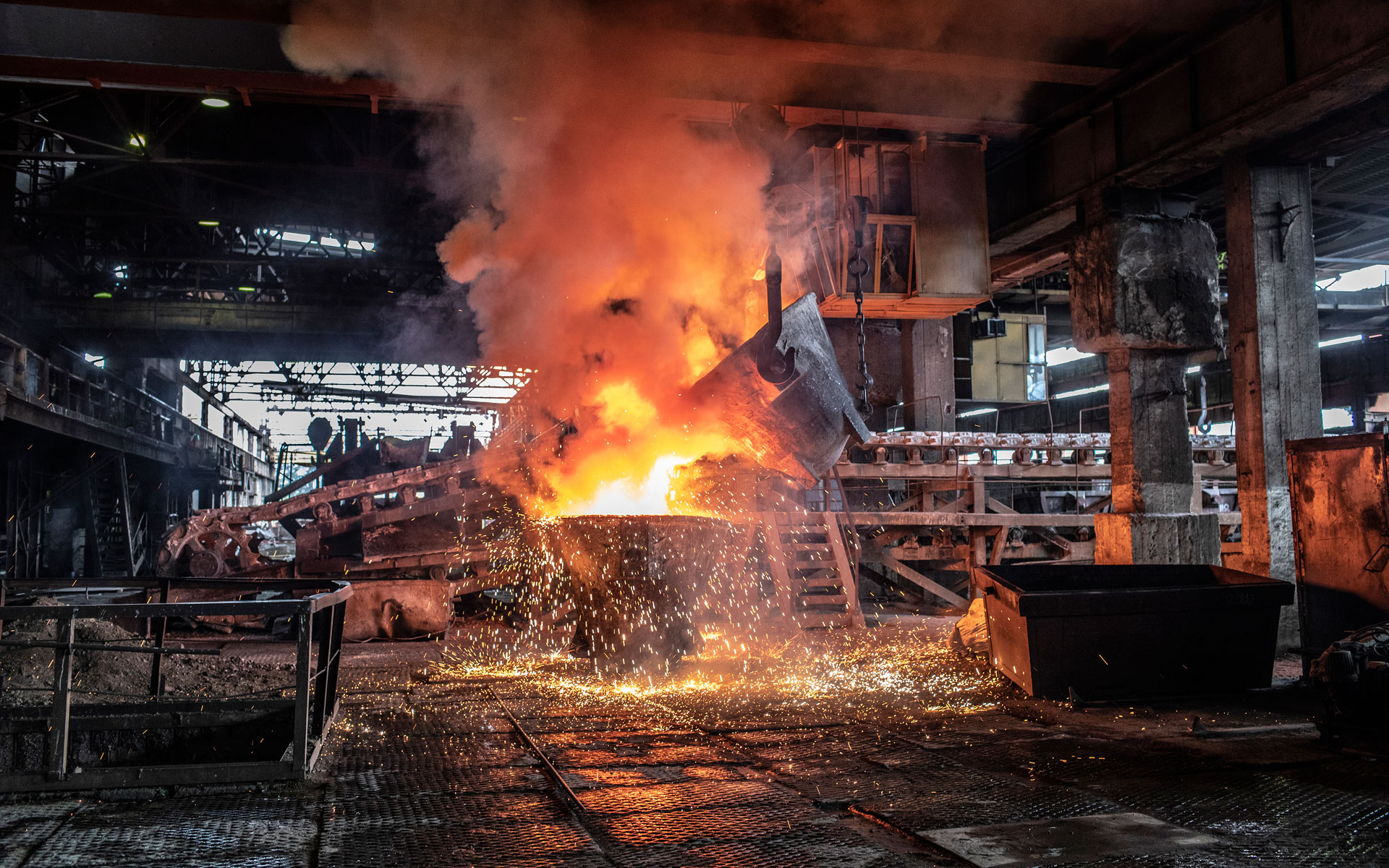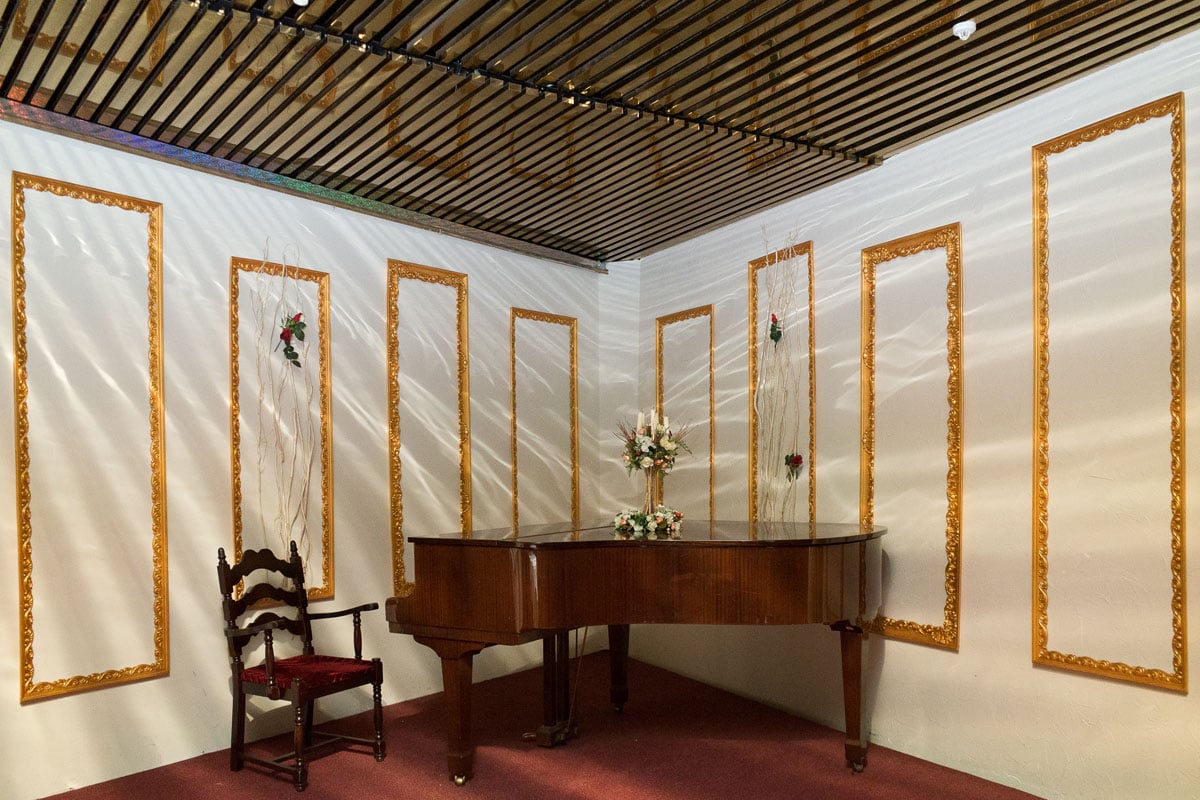Why one Ukrainian artist is turning the scraps of a Soviet factory into second hand clothes
Silk wasn’t the only thing woven on the shop floor of Ukraine’s Darnitski Factory. In Soviet times, the giant industrial site also knitted together a community of women who depended on the plant not just for work, but recreation, friendship, and education. Now, Kyiv-based artist Zhanna Kadyrova is reappropriating the building that once housed that legacy. By turning its tiles into “second hand clothes”, she explores how memories are passed from one person to the next.
Zhanna Kadyrova forged Second Hand amid the former glory of Kyiv’s Darnitski Silk Factory. Built in 1947, the plant was a powerhouse of post-war Ukrainian industry, paying 6,000 workers to weave and re-work millions of metres of fabric. Now, little is left of the factory’s manufacturing past.
Kadyrova is most interested in the building’s new life: transformed from socialist workshops to commercial real estate and warehouses. Using the tiles that once lined the building’s walls, she created her own range of dresses, skirts, and trousers: items to be passed from one owner to another in the search for new life, much like the buildings themselves.
“I started Second Hand in 2014, but I’ve been working with tiles since 2004,” Kadyrova told The Calvert Journal. “I wanted the project to be about memory but in a way that preserved the material history of the place.”
While scraps of silk are no longer seen on the factory floor, the tiles carry the memory of a very different fabric: the intangible social bond that the factory wove for a whole community of staff. As well as clubs and activities, the factory even boasted its own greenhouse to keep worker morale high.
“The site was supported by a strong social infrastructure, offering working women amateur sport clubs, recreation centres, and libraries,” says Kadyrova who has since moved the project to locations including the Seasons Cafe in Moscow, Havana’s Tuberculosis Hospital, and most recently to the Venice Biennale, where her “second hand clothes” cling from washing lines.
Each installation looks at the memories which linger long after a location or material has been reshaped or refashioned, for better or for worse. Reflecting on the care that went into workers’ welfare, the artist says: “[The Darnitski Silk Factory had] a surprising approach when we look at it in a modern-day context, with our obsession with ‘efficiency’ and ‘cost effectiveness’.” Explaining the crux of her project: “The question is whether such ideas really belong to the past, and what comes in their place.”

